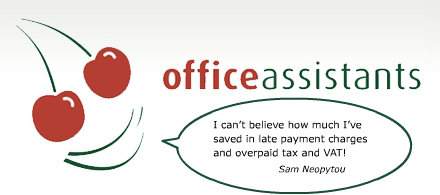
The government recently announced that the Making Tax Digital (MTD) for Income Tax Self-Assessment scheme for the self-employed, sole traders and landlords would be delayed until a phased approach in April 2026.
Here we look at the implications along with important information such as how to sign up for MTD and the software you need to submit records to HMRC.
What is Making Tax Digital?
To re-cap, Making Tax Digital is a government scheme to get businesses and self-employed to complete tax records and returns digitally. The aim is to reduce the number of mistakes and remove the need for paper records.
This is a huge task and so the government set key deadlines starting with VAT registered businesses earning above £85,000 which were required to keep digital records and submit digital VAT returns from April 2019.
Why were deadlines for MTD delayed?
Initially, the deadline for Making Tax Digital for Income Tax Self-Assessment was April 2024. This deadline has now been postponed for two years until April 2026. The reason for the delay was due to the challenging economic climate. The delay allows the self-employed, sole traders and landlords more time to understand and prepare for the changes.
What are the new deadlines for MTD for ITSA?
The new MTD deadlines for Income Tax Self-Assessment are as follows:
April 2026 – If your income is over £50,000, you will need to comply with keeping digital records and submit quarterly updates on your income and expenses to HMRC through compatible software.
April 2027 – If you’re self-employed or a landlord with an income between £30,000 and £50,000 you will need to be on board with MTD from April 2027.
There is no guidance currently for smaller businesses that have an income less than £30,000.
All taxpayers will be able to join the initiative voluntarily, and it’s worth thinking about doing this early to give yourself time to get used to the new system before the deadlines hit.
What are the implications of MTD for small and medium sized businesses?
Making Tax Digital means you must keep business records digitally and send income tax updates to HMRC instead of filing a Self-Assessment tax return.
The biggest impact for implementing MTD is that businesses will have to report income and expenditure to HMRC every three months using specified compatible software.
HMRC says that the more frequent statements will give a clearer picture of how much income tax is owed and reported on as it’s based on real time.
If you aren’t already using accounting software, you are likely to face costs both implementing and training staff to use and comply with Making Tax Digital.
Who can sign up for MTD and how?
If you’re self-employed, a sole trader or a landlord who rents out UK property, you can sign up for MTD now, if you wish. But it’s not yet compulsory.
You do not need to sign up yet if you’re a limited company or if you’re operating as a partnership as there’s no deadline yet set for these types of businesses.
What is Making Tax Digital software?
You will need to have compatible software to keep records which will show both an income and expenses summary which can be sent to HMRC digitally every three months.
The MTD initiative will give estimates of how much tax you will owe as you go along, and your final report will provide the final figure. Any allowances or tax relief can be claimed at this point.
As we’ve mentioned, submitting your digital records needs to be compatible with HMRC. Examples of accounting MTD software include Quickbooks and Sage, but you can view the complete list here.
Get ready for Making Tax Digital
Although you have some time yet before you need to comply with the MTD for ITSA new deadlines, it’s worth thinking about now especially if you don’t use any form of digital accounting. Office Assistants can ensure that your bookkeeping processes are up to date and MTD compatible.
If you’d like to talk through any questions or concerns, we’d be happy to help, so please get in touch.





